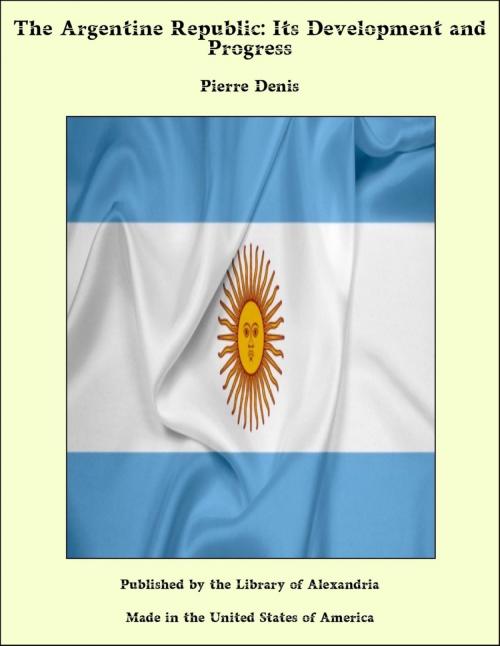The Argentine Republic: Its Development and Progress
Nonfiction, Religion & Spirituality, New Age, History, Fiction & Literature| Author: | Pierre Denis | ISBN: | 9781465539564 |
| Publisher: | Library of Alexandria | Publication: | March 8, 2015 |
| Imprint: | Language: | English |
| Author: | Pierre Denis |
| ISBN: | 9781465539564 |
| Publisher: | Library of Alexandria |
| Publication: | March 8, 2015 |
| Imprint: | |
| Language: | English |
The South-American continent is divided, from west to east, into three great zones. The lofty chains of the Andes stretch along the Pacific coast; at the foot of these are immense alluvial tablelands; further east are the level plains of the Atlantic coast. The eastern zone, the tablelands, ends southward at the mouth of the Rio de la Plata. It enters Argentine territory only in the north-east corner of the province of Misiones. Below 35° S. lat. the alluvial plains open freely upon the ocean. The position of Buenos Aires, in the threshold of the plain of the Pampas, is somewhat like that of Chicago at the beginning of the prairies; if you imagine the north-eastern States and eastern Canada struck off the map, and the sea penetrating inland as far as the Lakes. The three essential aspects of Argentine scenery are mountain, plain, and river. The Paraná, indeed, is a whole natural region in itself, with its arms and its islands, and the ever-changing low plain over which its floods spread, as one sees it from the top of the clay barrancas (cliffs); though it is so broad that one cannot see the opposite bank. It wanders over the plain like a foreigner, an emissary from tropical America; for it has a flora of its own and tepid waters which often cause a fog over the estuary where they mingle with the waters of the sea. From the general mass of the Argentine plains, we must set apart the region between the Paraná and the Uruguay, which Argentinians call "Mesopotamia." While æolian clays form the soil of the Pampa on the right bank of the Paraná, fluvial deposits—sands and gravel, in which it is impossible to distinguish the contribution of the Uruguay from that of the Paraná—cover a great part of Mesopotamia. The earlier beds of the rivers may be traced here, not only by the alluvial deposits they have left, but by the lagoons which still mark their course. Running waters have shaped the landscape and scooped out a system of secondary valleys, and these reflect the history of the river itself and the variations of base-level which led to alternate periods of erosion and deposit.
The South-American continent is divided, from west to east, into three great zones. The lofty chains of the Andes stretch along the Pacific coast; at the foot of these are immense alluvial tablelands; further east are the level plains of the Atlantic coast. The eastern zone, the tablelands, ends southward at the mouth of the Rio de la Plata. It enters Argentine territory only in the north-east corner of the province of Misiones. Below 35° S. lat. the alluvial plains open freely upon the ocean. The position of Buenos Aires, in the threshold of the plain of the Pampas, is somewhat like that of Chicago at the beginning of the prairies; if you imagine the north-eastern States and eastern Canada struck off the map, and the sea penetrating inland as far as the Lakes. The three essential aspects of Argentine scenery are mountain, plain, and river. The Paraná, indeed, is a whole natural region in itself, with its arms and its islands, and the ever-changing low plain over which its floods spread, as one sees it from the top of the clay barrancas (cliffs); though it is so broad that one cannot see the opposite bank. It wanders over the plain like a foreigner, an emissary from tropical America; for it has a flora of its own and tepid waters which often cause a fog over the estuary where they mingle with the waters of the sea. From the general mass of the Argentine plains, we must set apart the region between the Paraná and the Uruguay, which Argentinians call "Mesopotamia." While æolian clays form the soil of the Pampa on the right bank of the Paraná, fluvial deposits—sands and gravel, in which it is impossible to distinguish the contribution of the Uruguay from that of the Paraná—cover a great part of Mesopotamia. The earlier beds of the rivers may be traced here, not only by the alluvial deposits they have left, but by the lagoons which still mark their course. Running waters have shaped the landscape and scooped out a system of secondary valleys, and these reflect the history of the river itself and the variations of base-level which led to alternate periods of erosion and deposit.















